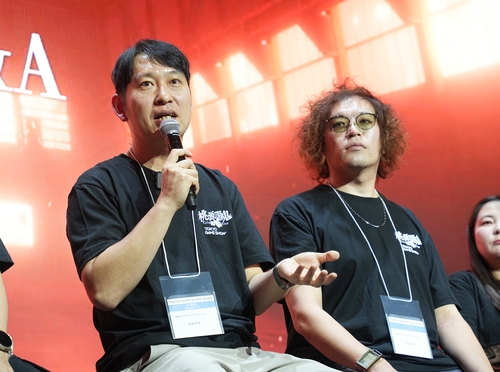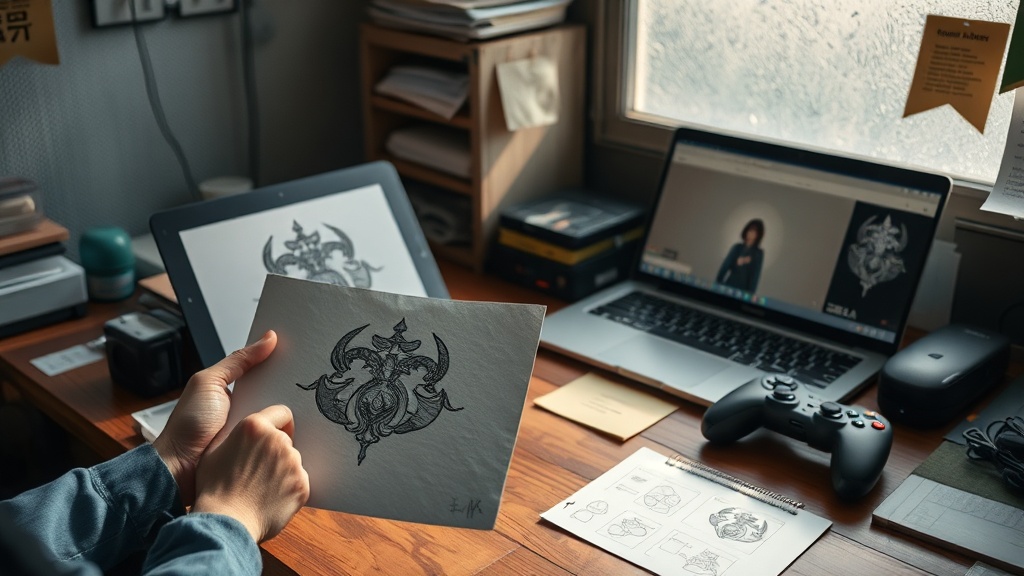Com2uS revealed ‘Togen Anki: Crimson Inferno’ at TGS 2025.
It aims to be a high‑quality RPG with cross‑play between mobile and PC.
The key will be how well the title balances the original’s dark‑fantasy mood with strategic gameplay.
“Momotaro’s Shadow” becomes a game: reinterpreting the Togen Anki IP
The root is Momotaro.
Togen Anki (桃源暗鬼) began as a manga by Yura Urushibara.
It started serialization in June 2020 and later expanded into an anime that aired in mid‑2024, building a broad fanbase.
The story borrows Momotaro (a classic Japanese tale) as a motif and turns the conflict between oni (demons) and human descendants into dark fantasy.
This setting relies on strong narrative drive and deliberate subversion of familiar myths.
Com2uS plans to turn that narrative into an RPG titled Togen Anki: Crimson Inferno.
The studio has announced multi‑platform support and cross‑play (allowing PC and mobile players to play together).
The reveal at TGS 2025 drew heavy attention online.
Fans are watching closely to see whether the game will carry the original’s tone faithfully.
Sharpening the core tech.
Recreating the manga’s atmosphere through graphics and systems is the real test.
Com2uS emphasizes high‑quality visuals as a strength.
However, better graphics alone won’t reproduce the original’s psychological weight.
Therefore the studio must design combat, story pacing, and character psychology together, not separately.
Meanwhile, cross‑play raises both technical hurdles and design trade‑offs.
Art direction should keep the source’s dark, refined tone while ensuring controls feel intuitive.
In short, user experience (UX) and balance tuning will decide success.
On the operational side, multi‑platform network stability, server architecture, and update cadence demand early planning.
All these elements must work together for the title to feel finished.

At the end of the day, the game is proven by players’ hands and screens.
Trailers set the mood, but repeatable systems determine longevity.
Com2uS should prioritize demos of core mechanics and rigorous balance tests.
How quickly and clearly the studio acts on player feedback will shape market trust.
The industry case is clear.
An IP‑based game can use brand recognition to lower early marketing costs.
Connecting manga and anime fans to a game audience helps initial adoption and word of mouth.
On the other hand, using an IP carries risk: damaging the original’s core values invites backlash.
Com2uS will need to strike a balance between commercial goals and respect for the source.
That balance touches many design choices: character interpretation, how the story is expanded, and the in‑game monetization model.
Monetization is especially sensitive because it directly affects fans’ feelings.
So transparent, fair design and clear communication from the outset are essential.
The pro case summarized.
First, the existing fanbase supplies an early user pool.
Identity built through the manga and anime helps initial player acquisition and organic sharing.
Second, cross‑play expands accessibility.
When mobile and PC players meet on the same servers, the player pool becomes more resilient.
Third, Com2uS has technical strengths in graphics and network engineering.
Past examples show studios with strong tech can raise perceived quality and recover reputation.
Fourth, a tactical RPG structure can complement the original’s narrative.
Properly combined, storytelling and combat can let players live the source’s psychological tension through gameplay.
Fifth, from a business angle, IP‑based titles often offer clearer monetization paths.
Merchandise, collaborations, and seasonal events provide revenue diversity.
Cross‑platform promotion can also amplify reach.
Therefore the industrial rationale for adaptation is reasonable.
Counterarguments deserve careful attention.
The biggest worry is distortion through commercialization.
Concerns appear on multiple levels.
First, alienating the original fanbase.
If the manga’s layered psychological portrayals are flattened, fans may react strongly.
Adapting complex character motives into game mechanics risks losing subtlety.
Second, genre mismatch.
RPG mechanics can change a story’s atmosphere depending on choices and combat loops.
Maintaining a dark tone while delivering satisfying gameplay is difficult.
If the game becomes repetitive combat without narrative depth, the source’s appeal may fade.
Third, over‑commercialization.
If monetization steers design decisions, fans’ trust can erode fast.
That might boost short‑term revenue but harm long‑term brand equity.
Fourth, fierce market competition.
The mobile RPG space is crowded, and failure to differentiate will limit success.
Fifth, cultural sensitivity.
Turning Momotaro elements into modern dark fantasy involves interpretive choices that can spark misunderstanding.
Such conflicts could produce uneven reactions between domestic and international audiences.
Ultimately, these objections point to long‑term brand risk, not just immediate complaints.
Designing for balance.
The remedies are multi‑layered.
First, formal collaboration between the development narrative team and the original creator is essential.
Sharing the source’s core messages and character directions early reduces avoidable drift.
Second, make monetization transparent and reasonable.
Third, technically optimize with platform limits in mind.
To give similar experiences on mobile and PC, interface and difficulty should be tuned per platform.
Fourth, embed community feedback into development.
Use beta tests and open channels to hear real users, while protecting core story integrity.
In the end, the game’s fate depends not only on tech but on a design commitment to honor the source.
That commitment will show up in early policies and communication.
Rebuilding or maintaining fan trust takes time, but transparent early dialogue can shorten that path.
Marketing should act as a bridge between the manga and the game, not just as promotion.
Conclusion.
The Togen Anki IP’s move to games carries both strong promise and clear risk.
IP power can secure early attention, but lasting success depends on careful design.
Com2uS’s technical skill is an advantage, yet meeting fans’ expectations will require meticulous choices.
To summarize: first, balance respect for the source with commercial aims.
Second, aim for technical polish and transparent operations.
Third, maintain ongoing communication with the community.
How do you feel about a Togen Anki game adaptation?
